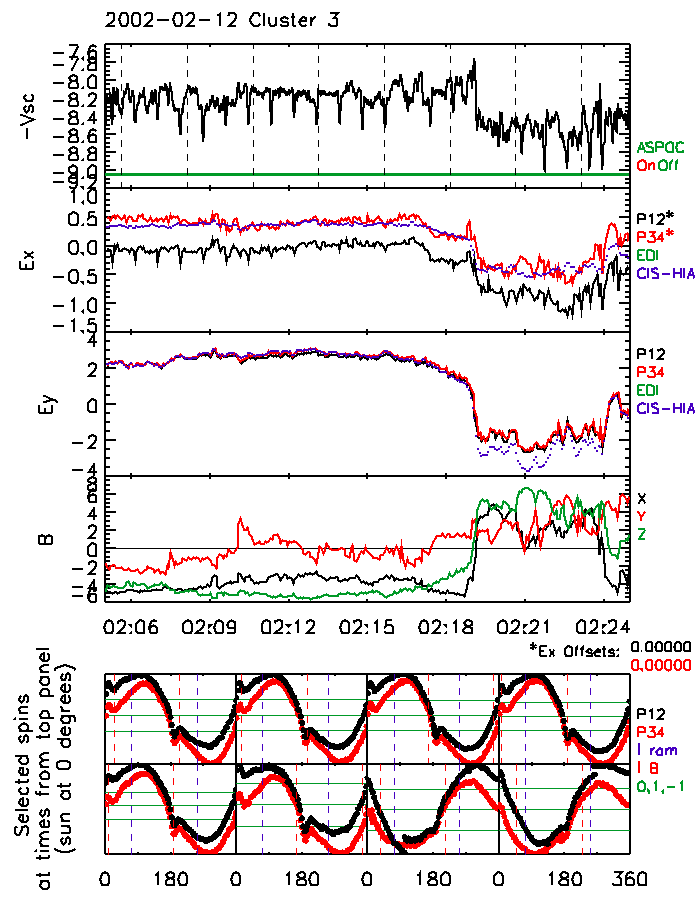
Online Help Pitfalls
Plasmasphere Related |
Region: Solar WindCaution level: Low |
| Problem Type |
Frequency of Occurence |
Ease of detection |
Remediable? |
Data Loss Severity |
|---|---|---|---|---|
| Velocity Wake |
Frequent |
Easy |
Yes |
Negligible |
Examples of good EFW data in the solar wind
 This
data, from 2002-02-12, shows good agreement between both probe pairs
of EFW (red, black) and CIS (blue). Low magnetic field strength results
in no measurement by EDI. Offsets of 0.45 (P12) and 0.05 (P34) mV/m
have been subtracted in the X direction. Note the small
velocity wake in this data, which has been removed by the spinfitting routine.
More information on figure quantities is given here. This
data, from 2002-02-12, shows good agreement between both probe pairs
of EFW (red, black) and CIS (blue). Low magnetic field strength results
in no measurement by EDI. Offsets of 0.45 (P12) and 0.05 (P34) mV/m
have been subtracted in the X direction. Note the small
velocity wake in this data, which has been removed by the spinfitting routine.
More information on figure quantities is given here. |
Problem: Velocity Wake
| Example of the problem |
2002-02-12 0320 C3 Data from the solar wind, showing velocity wakes. The structures align with the +/-X direction. Description of the plotted quantities. |
| Description of the problem |
A velocity wake is often seen wherein a spurious signal occurs on each probe as it passes through the antisunward direction. |
| How can it be detected? |
The
signature is easily seen in either the single-probe or double-probe (differenced)
data. Since the solar wind flows always nearly in the -X direction,
the wake occurs near 0 and 180 degrees. |
| How can it be corrected? |
Simply remove the affected region near the wakes. Spinfits performed on the remaining data are valid. |
| Why does it occur? |
The flow speed in the solar wind is often so high that the ions cannot fill
in behind the spacecraft before reaching the EFW booms. The result is a
spurious field when the boom points to within a few degrees tailward. |
| Other notes |
Back to pitfalls and problems.